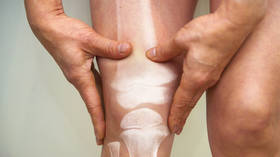Researchers use magnetic fields and hydrogels to grow new cartilage in incredible breakthrough

By combining magnetic fields and hydrogels, a team of researchers has produced artificial cartilage using a non-invasive method which could spark a revolution in regenerative medicine.
Scientists from the Perelman School of Medicine at the University of Pennsylvania have demonstrated a new possible way to reconstruct complex bodily tissues that could greatly reduce recovery times for common injuries, including cartilage degeneration in critical joints throughout the body.
Instead of synthetic or biologic materials commonly used for these types of injuries, a team led by Robert Mauck, director of the McKay Lab and a professor of orthopedic surgery and bioengineering, has used a combination of a magnetic liquid and three-dimensional hydrogel solution which could conform to the particular nuances of an injury within the body.
This way, cells and other objects involved in a given injury treatment could be rearranged as needed to mimic naturally occurring tissues using a non-invasive, non-destructive process.
The researchers avoided adding magnetic particles to the damaged cells themselves, citing unwanted long-term effects, but instead opted for a non-invasive approach which 'magnetized' the environment around the cells.
Also on rt.com Humans have the genes to REGROW their own eyes – they just got switched off through evolutionWith these types of injuries, often referred to as 'soft-tissue damage’, more often than not the harm is not catastrophic and is confined to one or two areas, typically forming a hole in the membrane.
Common fixes for breakdown of tissues like cartilage work much the same way as road or home repairs do, by filling in the holes with some synthetic material. However, such materials have a habit of wearing away over time, as they are non-organic, and can cause unwanted side effects.
Furthermore, the more complicated the initial structure, the harder it is to find a suitable alternative material to plug the gap while fulfilling much the same function. When it comes to cartilage in particular, it is more densely packed with cells at the surface, becoming much less cellular closer to the bone to which it is attached, meaning any synthetic replacement would need to be rather finely engineered.
The team’s hydrogel solution (along with medicinal objects suspended in it) is poured into the damaged area before being exposed to ultraviolet light which locks it in place. The magnetic solution is then slowly diffused out of the body over time.
The team successfully managed to recreate articular cartilage, which is located at critical joints in the human body like the knees and elbows, a key source of injuries among professional athletes. “By locking cells and other drug delivering agents in place via magneto-patterning, we are able to start tissues on the appropriate trajectory to produce better implants for cartilage repair,” Mauck said.
For now, the studies were conducted in laboratory, 'in vitro' settings, but they mark the latest step towards more advanced regenerative medicine technologies without the need for multiple, expensive and invasive surgeries.
Think your friends would be interested? Share this story!













